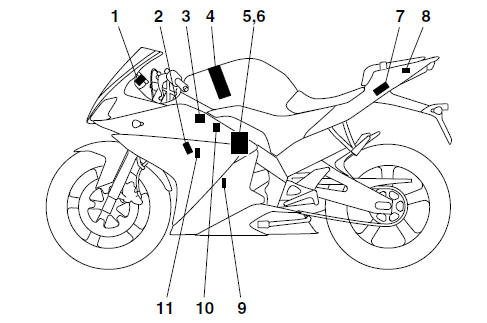Yamaha YZF-R125 Service Manual: Outline of the fi system
The main function of a fuel supply system is to provide fuel to the combustion chamber at the optimum air-fuel ratio in accordance with the engine operating conditions and the atmospheric temperature. In the conventional carburetor system, the air-fuel ratio of the mixture that is supplied to the combustion chamber is created by the volume of the intake air and the fuel that is metered by the jet used in the respective carburetor.
Despite the same volume of intake air, the fuel volume requirement varies by the engine operating conditions, such as acceleration, deceleration, or operating under a heavy load. Carburetors that meter the fuel through the use of jets have been provided with various auxiliary devices, so that an optimum airfuel ratio can be achieved to accommodate the constant changes in the operating conditions of the engine.
As the requirements for the engine to deliver more performance and cleaner exhaust gases increase, it becomes necessary to control the air-fuel ratio in a more precise and finely tuned manner. To accommodate this need, this model has adopted an electronically controlled fuel injection (FI) system, in place of the conventional carburetor system. This system can achieve an optimum air-fuel ratio required by the engine at all times by using a microprocessor that regulates the fuel injection volume according to the engine operating conditions detected by various sensors.
The adoption of the FI system has resulted in a highly precise fuel supply, improved engine response, better fuel economy, and reduced exhaust emissions.

- Engine trouble warning light
- Spark plug
- Ignition coil
- Fuel pump
- FID (fast idle solenoid)
- Throttle body sensor assembly (consisting of throttle position sensor, intake air pressure sensor, intake air temperature sensor)
- ECU (engine control unit)
- Lean angle sensor
- Crankshaft position sensor
- Fuel injector
- Coolant temperature sensor
 Features
Features
...
 Fi system
Fi system
The fuel pump delivers fuel to the fuel injector via the fuel filter. The
pressure regulator maintains the
fuel pressure that is applied to the fuel injector at only 250 kPa (2.50 kg/cm²,
36 ...
Other materials:
Checking the front brake caliper
1. Check:
Brake caliper pistons "1"
Rust/scratches/wear Replace the
brake
caliper assembly.
Brake caliper body "2"
Cracks/damage Replace the brake
caliper
assembly.
Brake fluid delivery passages
(brake caliper body)
Obstruction Blow out with
compressed air.
...
Troubleshooting
Any of the following fail to light: turn signal lights, brake light or
indicator lights.
The horn fails to sound.
The fuel gauge fails to operate.
The speedometer fails to operate.
NOTE:
Before troubleshooting, remove the following part(s):
1. Seats
2. Fuel tank
3. Left upper ...
Checking the shift forks
The following procedure applies to all of the shift
forks.
1. Check:
Shift fork cam follower "1"
Shift fork pawl "2"
Bends/damage/scoring/wear
Replace the
shift fork.
2. Check:
Shift fork guide bar
Roll the shift fork guide bar on a flat surface.
Bends Replace. ...
